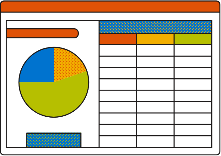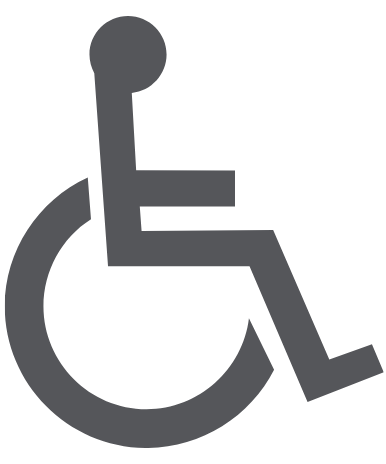Neighbourhood Traffic Calming Program
The goal of our traffic calming program is to create vibrant, livable neighbourhoods by reducing the negative impacts of vehicles on residential streets. Addressing driver behaviour issues will create safer and more comfortable environments for other transportation modes such as walking, cycling, and rolling. Controlling speeding and other driver behaviour issues can reduce the number of conflicts between road users and increase quality of life.
Every year, we receive various road safety concerns from residents. The traffic calming program focuses on addressing their concerns through traffic calming solutions on neighbourhood streets.
The traffic calming program aligns with the Imagine Kelowna community vision, 2040 Official Community Plan, and the 2040 Transportation Master Plan through the following:
 Exploring ways to control speeding on neighbourhood streets
Exploring ways to control speeding on neighbourhood streets
 Creating neighbourhood streets that are safer for and more comfortable for all modes and shifting from a car-centric culture
Creating neighbourhood streets that are safer for and more comfortable for all modes and shifting from a car-centric culture
 Prioritizing locations near school
Prioritizing locations near school
Which streets are eligible for traffic calming through the City’s Traffic Calming Program? See below to learn more!
 Eligible
Eligible
Residential local and collector streets are most appropriate locations for traffic calming. These streets are primarily intended to provide direct access to homes and businesses, are often quieter, and vehicles are expected to drive slower and mix with people walking and biking.
Not Eligible
We do not support traffic calming on arterial roads as their main purpose is to move people and goods across the city. Traffic calming on major roads could also redirect traffic to neighbourhood streets and increase emergency response times.
 Not Eligible
Not Eligible
Alleyways and laneways generally have lower traffic volumes, vehicular speeds, and lower pedestrian/cyclists volumes.
 Not Eligible
Not Eligible
We do not supported traffic calming on industrial roads as their main purpose is to efficiently move goods and services across the City.
 Not Eligible
Not Eligible
We will not prioritize these streets when construction impacts are temporary. Additionally, developers are required to submit plans to mitigate the impacts of traffic diversions.
 Context-Sensitive
Context-Sensitive
We try to avoid traffic calming along transit routes in most cases. Traffic calming delays transit passengers and increases noise as they speed up and slow down.
 Context-Sensitive
Context-Sensitive
Steep Hills - Vertical traffic calming measures are avoided on road segments with grades equal or greater to eight per cent as they can have unintended negative outcomes. We support vertical traffic calming measures on roads with grades below six per cent but use precaution with grades between six and eight per cent.
Curves - Adding traffic calming along curves can lead to unintended negative outcomes.
 Context-Sensitive
Context-Sensitive
We design traffic calming measures to balance the needs of all road users including emergency responders. As much as possible, we work to minimize impacts to emergency response times. We avoid traffic calming streets that provide direct access to emergency services buildings and avoid using measures which significantly increase delays to emergency management routes.
 Context-Sensitive
Context-Sensitive
We generally try to include traffic calming as part of a larger construction project to ensure projects are delivered in a cost-effective manner.
 Not Eligible
Not Eligible
If speeding occurs at specific times, you may request speed enforcement from the RCMP by calling 250-762-3300
Not sure if your street qualifies for traffic calming? Click the blue chat icon in the bottom right corner of this page, type in traffic calming, and then enter your address to check eligibility.
The Traffic Calming Program follows our nine-step process to ensure requests are considered thoroughly, priority locations are identified, and resources are allocated fairly across the city. A step-by-step process ensures that resources and budgets are equitably allocated throughout the city. Further details are outlined in the process below.
Service requests are gathered from the following sources:
- Our Services and Requests page (preferred option)
- Phone
- Councillor / Mayor Request
Please note that there may be delays to responses as we receive upwards of 300 traffic calming requests per year.
 A desktop review and initial assessment is conducted to understand the location of concern. In this step, relevant information is gathered to determine if the street meets the requirements outlined in the traffic calming program. The requestor will be notified whether or not their street is a candidate for traffic calming.
A desktop review and initial assessment is conducted to understand the location of concern. In this step, relevant information is gathered to determine if the street meets the requirements outlined in the traffic calming program. The requestor will be notified whether or not their street is a candidate for traffic calming.
If the street was evaluated within the last six years and the area has not grown significantly (i.e. fewer than 100+ residential units), we will not proceed to Step 3. Traffic volumes and speeds generally do not change significantly on their own.
If a street is not a candidate for the City’s Traffic Calming program, the following options are available to you.
- Driver education from ICBC and the RCMP
- RCMP Speed Enforcement: you may request speed enforcement from the RCMP at 250-762-3300.
- Community Police Speed Watch Program: Operated by the Community Police and helps increase awareness and mitigate speeds at locations experiencing driver behavioural issues.
- Safe routes 4 schools’ program: a program developed to encourage students to walk or bike to school.
- Speed Reader Boards: an operational program which rotates speed display signage every 2-3 months to various locations within the city.
We visit the site to observe existing conditions and collect data on traffic volumes, speeds, driver behaviour and other activity on the street (e.g. people walking and biking).
Note – data collection occurs in the Spring, Summer, and Fall time only, as directed by Transportation Master Plan Policy 6.21.
The need for traffic calming is evaluated using the following criteria:
 Vehicular speeds: 85th percentile speeds – this is the speed that roughly 1 out of 5 cars is going faster than.
Vehicular speeds: 85th percentile speeds – this is the speed that roughly 1 out of 5 cars is going faster than.
 Traffic volumes: Average daily traffic volumes
Traffic volumes: Average daily traffic volumes
 Existing active transportation facilities: For example, presence of a sidewalk or bike lanes
Existing active transportation facilities: For example, presence of a sidewalk or bike lanes
 Number of people walking and biking: Average daily pedestrians and cyclists
Number of people walking and biking: Average daily pedestrians and cyclists
 Presence of vulnerable road users: Children commuting to school, seniors
Presence of vulnerable road users: Children commuting to school, seniors
 Land use context: For example, Urban Centre, Suburban or Rural.
Land use context: For example, Urban Centre, Suburban or Rural.
Priorities for traffic calming are reviewed annually in the Fall. We choose sites to proceed to design and construction based on our available resources and coordination with other City projects.
Depending on the context, we may choose to do a Neighbourhood Traffic Calming Plan for a broader area, or a Localized Traffic Study to focus on a single street. Sometimes traffic calming one street diverts traffic to other streets.
- Neighbourhood traffic calming plan: Plan development through a neighbourhood approach. In some cases, individual traffic calming measures implemented alone can result in unintended traffic problems (i.e. shortcutting) on other streets.
- Localized traffic study: Focuses on a single block or street.
The implementation plan generally follows this process:
- Define the project area.

- Existing conditions review and problem definition statement.
- Preliminary traffic calming options and alternatives based on evaluation criteria, engineering judgment, and national standards.
- Consult community members.
- Evaluate, analyze, and select traffic calming measures based on maximizing benefits and minimizing costs.
We require community support prior to installing traffic calming measures. If a street is highly ranked, and a design is completed for the street or neighbourhood, the following community survey process will be completed:
 Determining the Consultation Area: Properties impacted by the proposed traffic calming measures will be notified. Consultation areas are determined by the Integrated Transportation department based on the locations of the proposed measures.
Determining the Consultation Area: Properties impacted by the proposed traffic calming measures will be notified. Consultation areas are determined by the Integrated Transportation department based on the locations of the proposed measures. Providing Level of Support: Properties provide their level of support for the traffic calming measures (in favour or opposed). The consultation area must receive a minimum of 70 per cent in support for traffic calming project to proceed:
Providing Level of Support: Properties provide their level of support for the traffic calming measures (in favour or opposed). The consultation area must receive a minimum of 70 per cent in support for traffic calming project to proceed:- Each property/address are allotted one opportunity to provide their level of support.
- The property/address must be in the consultation area to be counted.
- We will assume that a property/address is in favour of the proposal if they do not provide a response.
- If the project has 70 per cent or more support the measures are scheduled for construction. Otherwise, the project is put on hold and the next street at the top of the list is designed
- Notification: Residents are notified whether the project will proceed or not

We utilize the traffic calming measures based on the Canadian Guide to Traffic Calming (Second Edition) prepared by the Transportation Association of Canada (TAC) and Canadian Institute of Transportation Engineers (CITE), which is a standardized decision-making tool used by transportation professionals within Canada.
We generally confirm a preferred solution in the summer or fall time. Detailed design will be prepared based on preliminary concept planning and feedback from the community engagement.
Timing of implementation will depend on the following:
 Crew availability
Crew availability
 Resources
Resources
 Weather
Weather
 Alignment with other capital projects
Alignment with other capital projects
 Annual Budgeting Process
Annual Budgeting Process
 We collect data before and after adding traffic calming to see if it is working. If traffic calming is not effective, we may remove or modify it.
We collect data before and after adding traffic calming to see if it is working. If traffic calming is not effective, we may remove or modify it.
Traffic calming measures are selected based on the Transportation Association of Canada’s (TAC) Canadian Guide to Traffic Calming, which considers the road geometry, driveway locations, grades, and emergency access route, impacts to alternative modes, maintenance, and presence of on-street parking. Our toolbox outlines the traffic calming measures most commonly used throughout Kelowna.
Speed humps are raised area of roadways which cause vertical movement. Most commonly used traffic calming measure as it is a cost-effective way to reduce vehicular speeds.
Applicability:
- Most effective in urbanized neighbourhoods and speed limits equal or less than 50km/h.
- Road grades less than eight per cent. Caution on grades between six per cent and eight per cent.
- Avoid on transit or emergency response routes.
- Avoid at driveways and intersections.

Speed cushions are similar to speed humps; however, the speed cushion does not cover the full width of the street. The speed cushion allows for transit or emergency vehicles to straddle the cushion.
Applicability:
- Most effective in urbanized neighbourhoods and speed limits equal or less than 50km/h.
- Road grades less than eight per cent. Caution on grades between six per cent and eight per cent.
Avoid at driveways and intersections.

A crosswalk which is raised from the existing roadway elevation to improve pedestrian visibility.
Applicability:
- Most effective in urbanized neighbourhoods at an existing crosswalk with speed limits equal or less than 50km/h.
- Road grades less than eight per cent. Caution on grades between six per cent and eight per cent.
- Avoid on transit or emergency response routes.
- Avoid at driveways and intersections.

Curb extensions reduce the roadway width by extending the sidewalk into the parking lane. Curb extensions increase pedestrian visibility and create additional pedestrian space. (Also known as bulb-outs / neckdown / choker)
Applicability:
- All neighbourhood streets regardless of traffic volumes

Chicanes are defined as curb extensions that alternate form one side of the street to the other necessitating drivers to follow a curve in the street.
Applicability:
- Most effective in urbanized neighbourhoods with speed limits equal or less than 50km/h.
- Avoid on frequent transit routes
- Road grades less than eight per cent. Caution on grades between six per cent and eight per cent.
- Avoid at driveways and intersections.

Traffic Circles are islands in the middle of intersections used to route vehicles in a circular path rather than directly through the intersection.
Applicability:
- Most effective in urbanized neighbourhoods with speed limits equal or less than 50km/h.
- Avoid on transit or emergency response routes.
- Road grades less than eight per cent. Caution on grades between six per cent and eight per cent.
- Avoid horizontal measures around.

Lane Narrowing: Reducing the lane width using paint markings, delineator posts, or traffic calming curbs.
Medians: Delineator posts or elevated concrete island in the center of the roadway which reduces the effective width of travel lanes.

Street signage and pavement markings traffic calming measures are a traffic calming measures utilized by the City. Some measures can be cost-effective; however, many require regular maintenance which can increase costs over time. Street signage and pavement marking examples in the City of Kelowna include:
- Speed Display Signage: LED roadside signs which incorporate vehicular speeds, and warning messages. To note, these signs are costly, and their effectiveness may diminish as drivers become accustomed to them.
- Traffic Calmed Neighbourhood Sign: Advises drivers that traffic calming measures are implemented within the neighbourhood.
- Dragons Teeth: Triangular Road markings placed on either side of the lane. The markings create an illusion of decreased roadway width.
- Speed Limit Pavement Markings: Speed limit painted on the street to remind drivers of the speed limit and to increase driver awareness.

- Safe Routes 4 Schools’ Program: a program developed to encourage students to walk or bike to school.
- Speed Reader Boards: an operational program which rotates speed display signage to various locations within the City.
- RCMP Enforcement: you may request speed enforcement from the RCMP at 250-762-3300.
- Community Police Speed Watch Program: Operated by the Community Police and helps increase awareness and mitigate speeds at locations experiencing driver behavioral issues.
- Host a neighbourhood block party and chat with your neighbours to raise awareness around traffic issues.
- Follow the rules of the road and drive the posted speed limit.
- Be considerate of other road users.
- Use an alternative mode of transportation. Cycling, walking, or taking transit could reduce vehicular traffic in the neighbourhood.
Stop signs are a traffic control device that is used to allocate the road right of way. They should not be used for the following:
- As a speed control device.
- To deter through movement traffic in residential areas.
Unwarranted stop signs generally have lower compliance. Drivers tend to ignore unwarranted traffic controls by “rolling” through the stop, creating unsafe traffic conditions.
The British Columbia Motor Vehicle Act (MVA) legislates speed limits on public roadways within British Columbia. The MVA has established 50km/h as the default speed limit other than in school zones. Reducing the speed limit alone will not likely reduce motor vehicle speeds.
There have been many traffic calming studies which have reviewed noise impacts of speed humps in neighbourhoods. The majority of studies have determined that minimal or reduced overall noise change compared to without vertical deflections or humps. The Transportation Association of Canada Canadian Guide to Traffic Calming (2nd Edition) states the following: "Traffic noise may be reduced due to lower speeds (benefits may be offset by increased noise due to braking and accelerating)"
Our Roadway Operations team is consulted during step 5 of each traffic calming project to ensure there are minimal impacts to snow clearing.
The design of speed humps and cushions ensures there are no problems with winter maintenance and snow clearing. Snowplows slow down approaching the hump and plow right over them. Nonetheless, snowplows may remove paint markings from the hump.
Sidewalks are a separate program and are primarily prioritized through our Pedestrian and Bike Master Plan. Sidewalks come at a much greater cost than traffic calming measures and do not address vehicular speeding issues.
Our Sidewalk Program webpage can be viewed for further sidewalk implementation information and a map of the current and planned pedestrian network.
Before submitting a service request, check if your street is eligible for traffic calming. Open the virtual assistant by clicking the blue chat icon in the bottom right corner of this page, type in traffic calming, and enter your address to verify eligibility.



